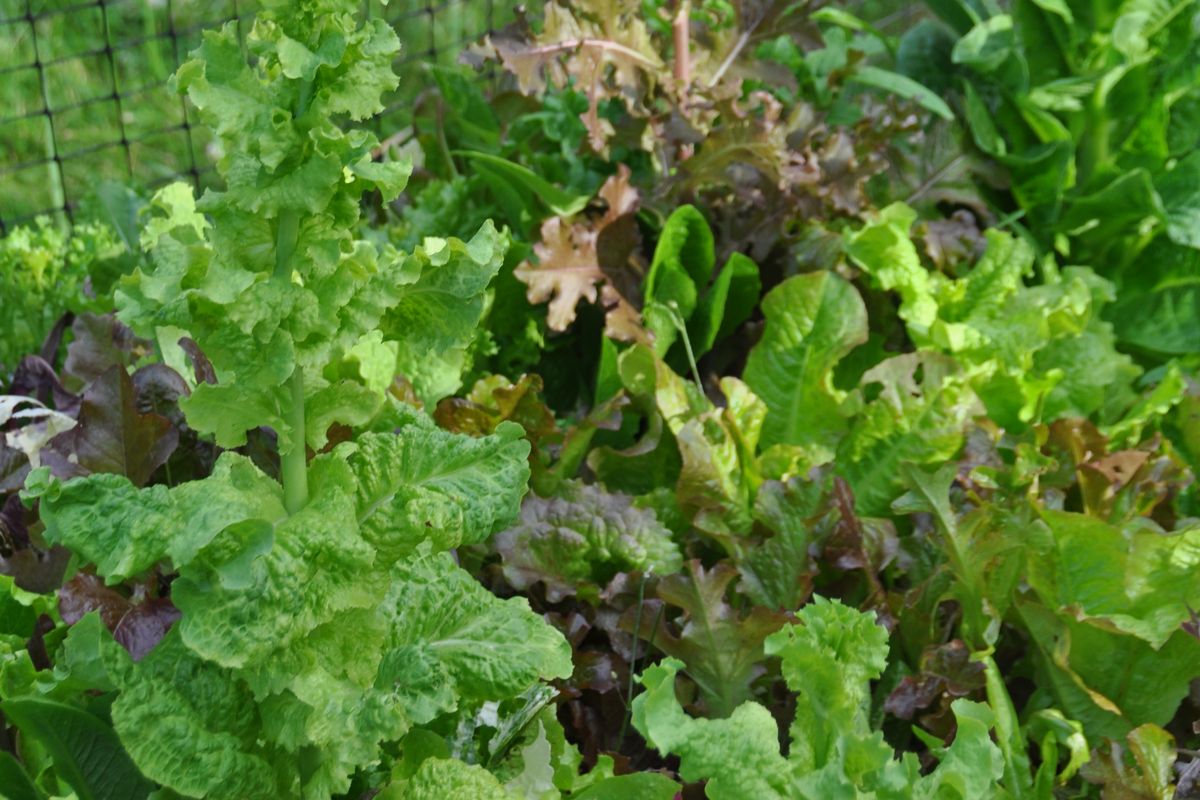Gardening: Hot days, cool nights setting up healthy crops

The heat is finally here. After a cool, wet start to the summer, the heat we need to get gardens growing set in this week and looks like it will be around for the foreseeable future. Even more important, our nights are going to be between 55 and 60 degrees which means tomatoes, peppers and several other vegetables will be able to set fruit.
The cooler weather slowed down the growth of a lot of warm season crops, but it created a banner year for the cool season crops. My peas are 6 feet tall and we ate lettuce for weeks before it got bitter and started bolting. The cabbage and cauliflower are growing big and we’ll have cauliflower with cheese sauce later this week.
I planted tomatoes, peppers and eggplants on Mothers Day weekend under homemade greenhouses made of PVC pipe and heavy floating row cover. The row cover held in the heat during the day and allowed the plants to grow bigger than if they had been in the open garden. When I uncovered them in early July, the peppers and tomatoes were blooming and were ready for the warm nights. The eggplants however had disappeared – all 18 plants I put in.
As the cool season crops come out of the garden, its time to think about fall planting. The warm temperatures and soil will sprout crops quickly so they will be at their prime when the weather starts to cool in late August. Carrots, lettuce, arugula, turnips, beets broccoli, cauliflower and cabbage can be seeded directly into the garden as the other crops are pulled out. The great thing about fall crops is that they are tolerant of a light frost which actually makes them sweeter.
Garlic planted last fall is ready to harvest. Gently dig out the heads with a hand fork being careful not to damage the bulb, leaving the stalks attached. Knock the big clumps of dirt off the roots and then gather the bulbs and stalks together with a cord and hang the clumps in a cool, dark dry place to cure for a month. This helps them develop an impermeable papery skin so they can be stored for several months. When they have cured, trim off the stalk 2 inches above the bulb and trim the roots.
Now is a good time to check your garden watering system for plugged heads or broken lines.
The plants will need extra water as it gets hot, and you don’t want to find out your system is broken when plants start dying.
Try to water in the morning before 10 a.m. or after 4 p.m. in the afternoon. In our region we can water at night if needed. We don’t have the humidity that causes disease issues.
It may also be time to increase the length of time your system operates. With the heat, gardens will need an inch and a half of water a week.